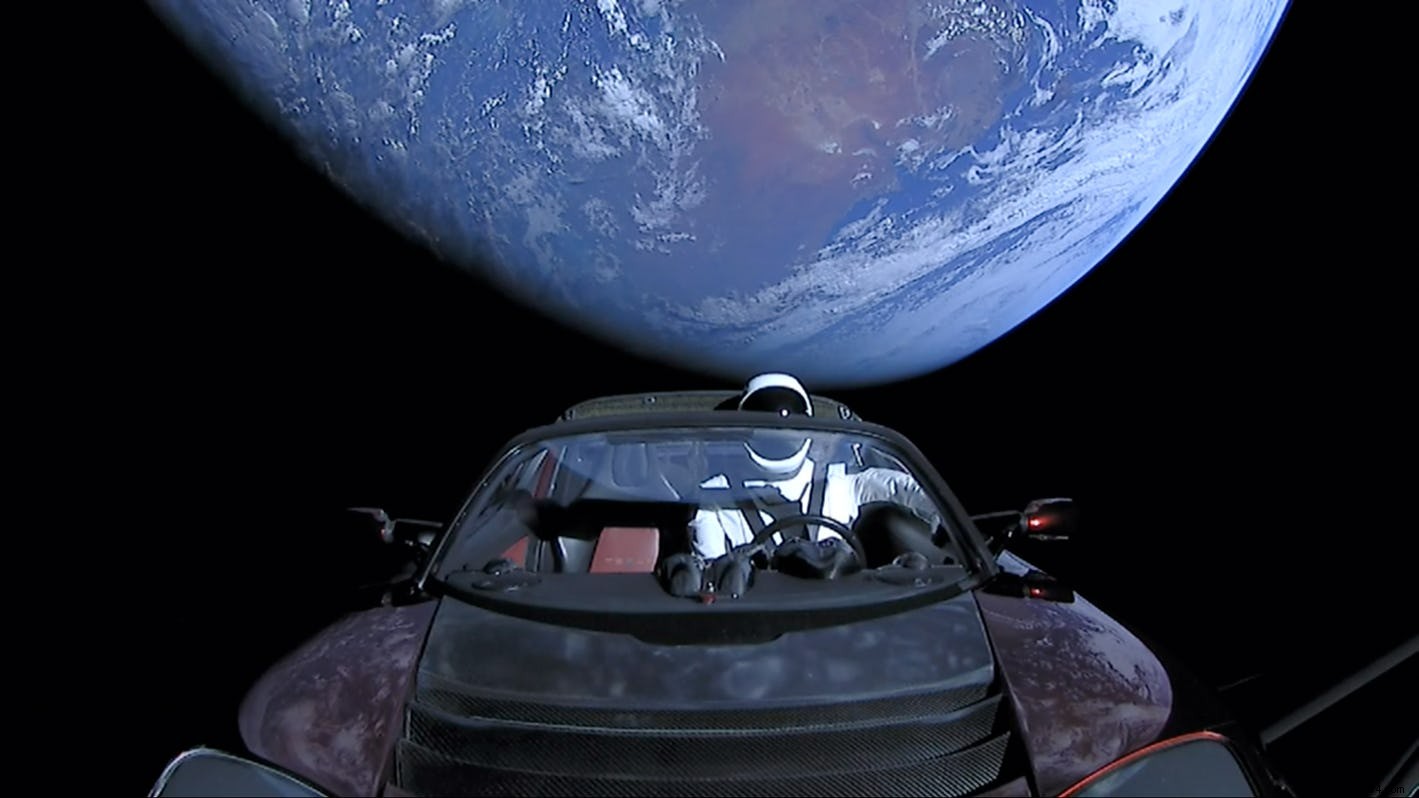Propelled into space almost three years ago, Elon Musk's Tesla and his model Starman are about to complete a second orbit of the Sun. Nevertheless, it's a safe bet that there is not much left of this now legendary payload.
Recall, in February 2018, Elon Musk used his Tesla Roadster, piloted by a driving dummy named Starman, as a payload on the mammoth's maiden voyage. SpaceX's Falcon Heavy rocket, the most powerful operational launch vehicle in the world. Since then, the vehicle and its driver have come a long way.
Indeed, we know that the car completed its first orbit around the center of mass of the Sun on August 18, 2019 after traveling approximately 762 million kilometers . Then, last October, "Starman" came within less than five million miles of the red planet.
At the time, according to the tracking site Whereisroadster.com, a platform for following the dummy's adventures in real time, the car and its driver had already traveled enough to travel all the roads of the world more than 57 times.
Since October, the Tesla has naturally continued its journey through the Solar System, traveling at nearly 115,000 km/h . This Wednesday, January 13, 2021, almost three years after its launch, the vehicle had performed 1, 9244 orbits of the Sun with an orbital period of 557 days . Both Towers of the Sun will normally be closed on February 25.
As a reminder, the words "Don't Panic appeared on the dashboard of the vehicle, a reference to the Douglas Adams novel The Hitchhiker's Guide to the Galaxy . The on-board audio system was also programmed to play "Space Oddity" and "Life on Mars? by David Bowie looped through each model's ear. If the batteries are still working, which would be very surprising, Starman would have already listened to "Space Oddity over 292,000 times since launch and the second title over 394,000 times.

Hard to estimate the degree of degradation of this incredible payload without images. However, it is very likely that the plastics of the car, as well as its carbon fiber frame, which is mainly composed of carbon-carbon bonds and carbon-hydrogen bonds, have already been destroyed by solar radiation and cosmic rays. In other words, there is probably not much left of the car.
Even so, what's left of the car and its driver will continue to "guzzle interplanetary asphalt" for years to come. SpaceX had initially expected that its dummy would evolve in the Solar System for about a billion years. It is also possible that the car will crash on Earth or Venus in a few tens of millions of years , according to a modeling study published in 2018.
In the meantime, "Starman" remains and will likely remain THE symbol of SpaceX's imaginative approach to space launches.
Finally, it should be noted that while SpaceX's Falcon Heavy has made a careful entry into the aerospace scene, the launcher has hardly been used by the company, operating only two commercial flights since its first launch on April 11 and June 25, 2019. Its next release is normally scheduled for early this year as part of a classified mission for the United States government.